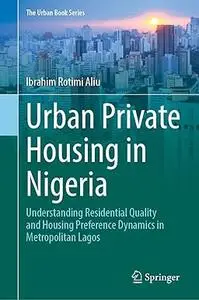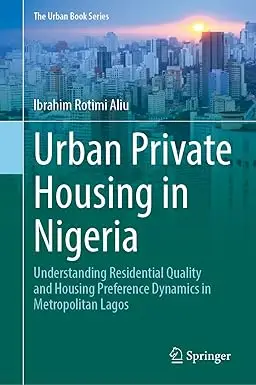Urban Private Housing in Nigeria: Understanding Residential Quality and Housing Preference Dynamics in Metropolitan Lagos
by Ibrahim Rotimi Aliu
English | 2024 | ISBN: 3031474317 | 222 Pages | True PDF | 6.07 MB
by Ibrahim Rotimi Aliu
English | 2024 | ISBN: 3031474317 | 222 Pages | True PDF | 6.07 MB
This book explains the variation and determinants of residential quality and housing preferences in urban private housing markets. It describes the residential characteristics and housing preference dynamics of Lagos urban residents who are majorly sheltered in the city’s private housing markets. Lagos Metropolitan Area (LMA) is a wide region with differentiated informal housing markets. The city private housing markets vary in quantity, quality, and prices which conjointly influence residents housing preferences and choices. Based on positivist philosophical stance, this book addresses the peculiarities of each residential market in Low Residential Density (LRD), Medium Residential Density (MRD), and High Residential Density (HRD) areas in terms of residential quality and housing preferences. With heuristic methods including predictive model and conjoint choice experimentation, this book unravels the level and variability of residential quality (neighborhood and structural) and housing preference (revealed and stated) decisions in Metropolitan Lagos. In addition, the residential quality and housing preferences are mapped to give their spatial patterns across Lagos megacity neighborhoods as segmented residential submarkets. Applying the positivist philosophical stance, the book provides evidence to support residential quality and housing preference variability across the city private housing submarkets. The book is both a guide and reference for students in the built environment, urban planners, urban policy decision makers, housing researchers, property managers, and real estate professionals who are interested in understanding the residential quality and preference dynamics within polarized cities.



